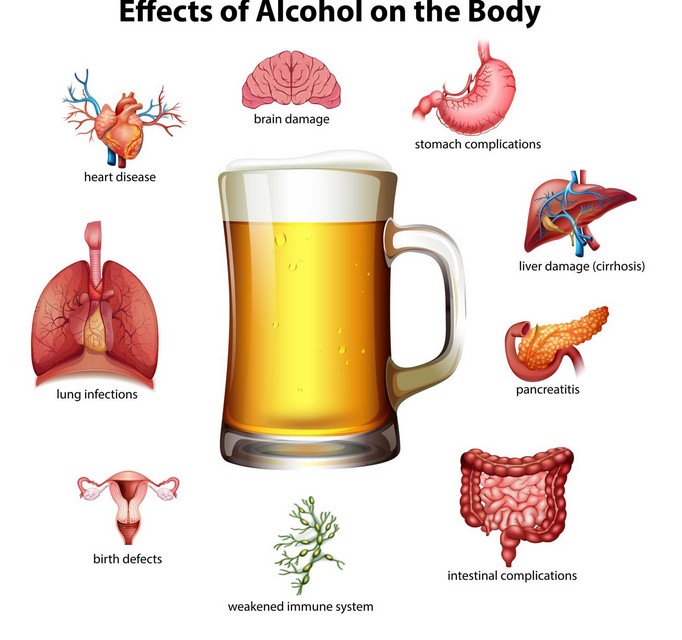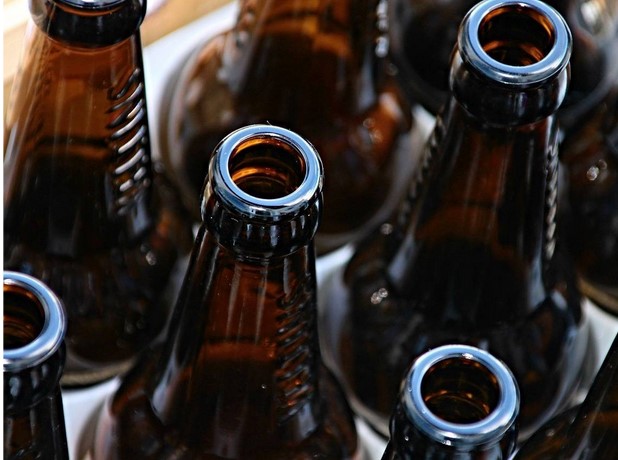1, 2, 3, 4, 5, 6, 7, 8, 9, 10. Every ten seconds a person in the world loses their life due to alcohol-related problems. And they are not necessarily abusers. Contrary to what is often stated, in fact, alcohol is not a nutrient and offers no benefit to the body or its functions.
In contrast, alcohol is a toxic, psychoactive, addictive substance and classified as a ‘group 1 carcinogen’, along with asbestos, radiation and tobacco. Ethanol is the main cause of at least seven types of cancer and causes direct clinical damage to the digestive system (especially stomach, liver and pancreas), cardiovascular, reproductive, as well as the immune and nervous systems.
Other harms associated with alcohol consumption are acute intoxication, which can lead to ethyl coma and death, episodes of violence (including sexual violence) caused by drunkenness, accidents at work, and drink-driving accidents (which are one of the main causes of death among young people). Suffice it to say that a blood alcohol level of 0.5 g/l is enough to double the risk of accidents, or that alcohol consumption during pregnancy is one of the major causes of mental retardation in children in Western countries.

Does a glass of wine a day extend life?
The answer is unequivocally ‘no’. The truth is that all scientific literature emphasises that the safest choice for health is not to drink at all, since even small amounts of alcohol carry potential health risks. For this simple reason, no major health organisation in the world has ever established a level of alcohol consumption that is totally risk-free.
The widespread belief that drinking alcohol in moderate quantities can have positive effects on health is therefore false. Adding to the mighty literature on the subject, a Canadian study published recently in the Journal of Studies on Alcohol and Drugs by public health and statistics experts at Victoria University in British Columbia has the merit of shedding light on the statistical criteria used by old, misleading studies.
By eliminating from the statistical samples the ‘teetotalers’ who had, however, consumed alcohol in the past and better defining the quantities for occasional drinkers, it became clear that this idea that alcohol can be ‘good for you’ is unfounded.
Let us therefore hope that we will never again have to hear statements from opinion leaders or politicians claiming that ‘a glass of wine a day prolongs life’.
World Health Organisation speaks
On 25 June 2024, the WHO published the Global Status Report on Alcohol and Health and Treatment of Substance Use Disorders’a report that identifies more than 200 diseases directly linked to alcohol consumption. The negative effects vary depending on the amount consumed and the frequency of excesses. Completely irrelevant is the quality or price of the bottle. For those who consume little alcohol, the risk of diseases such as diabetes, heart attack or stroke is lower than for those who drink daily or get drunk frequently. But it is still important to emphasise that according to the WHO ‘there is no safe level of alcohol consumption for our health’. The organisation emphasises that alcohol consumption not only has an impact on people who use it, but also on their families and communities. This is precisely why the prevention and treatment of addiction needs to become a global public health priority.
Alcohol consumption in Europe
In the European Union, per capita consumption has decreased by 2.9 litres over the last 40 years, from 12.7 litres of pure ethyl alcohol in 1980 to 9.8 litres in 2020 (23% reduction). Between 1980 and 2000, the decrease was significant, from 12.7 to 10.5 litres. However, in the following two decades, the reduction was slower, with a drop of 0.5 litres between 2010 and 2020. Despite this decline, Europe still leads with an average annual consumption per person (15 years and over) equivalent to about 190 litres of beer or 80 of wine or 24 of spirits.
Germany leads the ranking with 10.6 litres of pure alcohol, followed by France (10.4 litres), Spain (7.8 litres) and Italy (7.7 litres). In the UK, consumption is 9.7 litres.
Many European countries have introduced policies to reduce alcohol consumption, such as higher taxes, availability restrictions and advertising bans, but according to the OECD their effectiveness is often limited by poor enforcement and insufficient resources.
Complementary activities
Creative workshop: prevention campaign
Objective: to raise awareness of the importance of prevention with regard to alcohol consumption.
Activity: Students, in small groups, have to design an alcohol prevention campaign aimed at their peers or families, creating posters, videos or social media posts with awareness-raising messages using images, slogans and statistics.
Exhibition: At the end, the class organises an exhibition or projection of the campaigns produced.
You could also involve the school community and have them vote on the most effective campaign.



